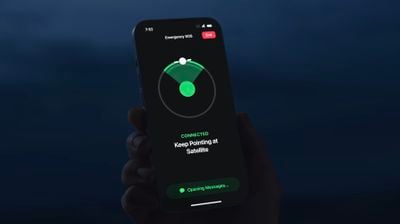Apple today announced that its Emergency SOS via satellite service is being extended for an additional free year for existing iPhone 14 users. Apple originally gave new iPhone 14 owners two free years after device activation, which would have expired in November 2024.

Emergency SOS via Satellite is now free for two more years starting today or at the time of activation of any iPhone 14 model. Apple says the free trial will be extended for iPhone 14 users who have activated their device in any country that supports Emergency SOS via satellite prior to 12 a.m. Pacific Time on November 15, 2023.
"Emergency SOS via satellite has helped save lives around the world. From a man who was rescued after his car plummeted over a 400-foot cliff in Los Angeles, to lost hikers found in the Apennine Mountains in Italy, we continue to hear stories of our customers being able to connect with emergency responders when they otherwise wouldn't have been able to," said Kaiann Drance, Apple's vice president of Worldwide iPhone Product Marketing. "We are so happy iPhone 14 and iPhone 15 users can take advantage of this groundbreaking service for two more years for free."
Available on all iPhone 14 and iPhone 15 models, the feature enables users to send text messages to emergency services via satellite when cellular and Wi-Fi coverage is not available. Users can also share their location via satellite in the Find My app.
With the service, Apple says users can send and receive messages in as little as 15 seconds in clear conditions. Users are prompted to complete a short questionnaire with vital information, and the interface then shows users where in the sky to point their iPhone to connect and send the initial message. This message includes the user's questionnaire responses, location, altitude, iPhone battery level, and Medical ID info if set.
Apple says the service is designed to work outdoors with a clear view of the sky. Apple warns that foliage or other obstructions can result in emergency messages taking longer to send or failing to send, and satellite connectivity might not work in places above 62° latitude, such as northern parts of Canada and Alaska.

















